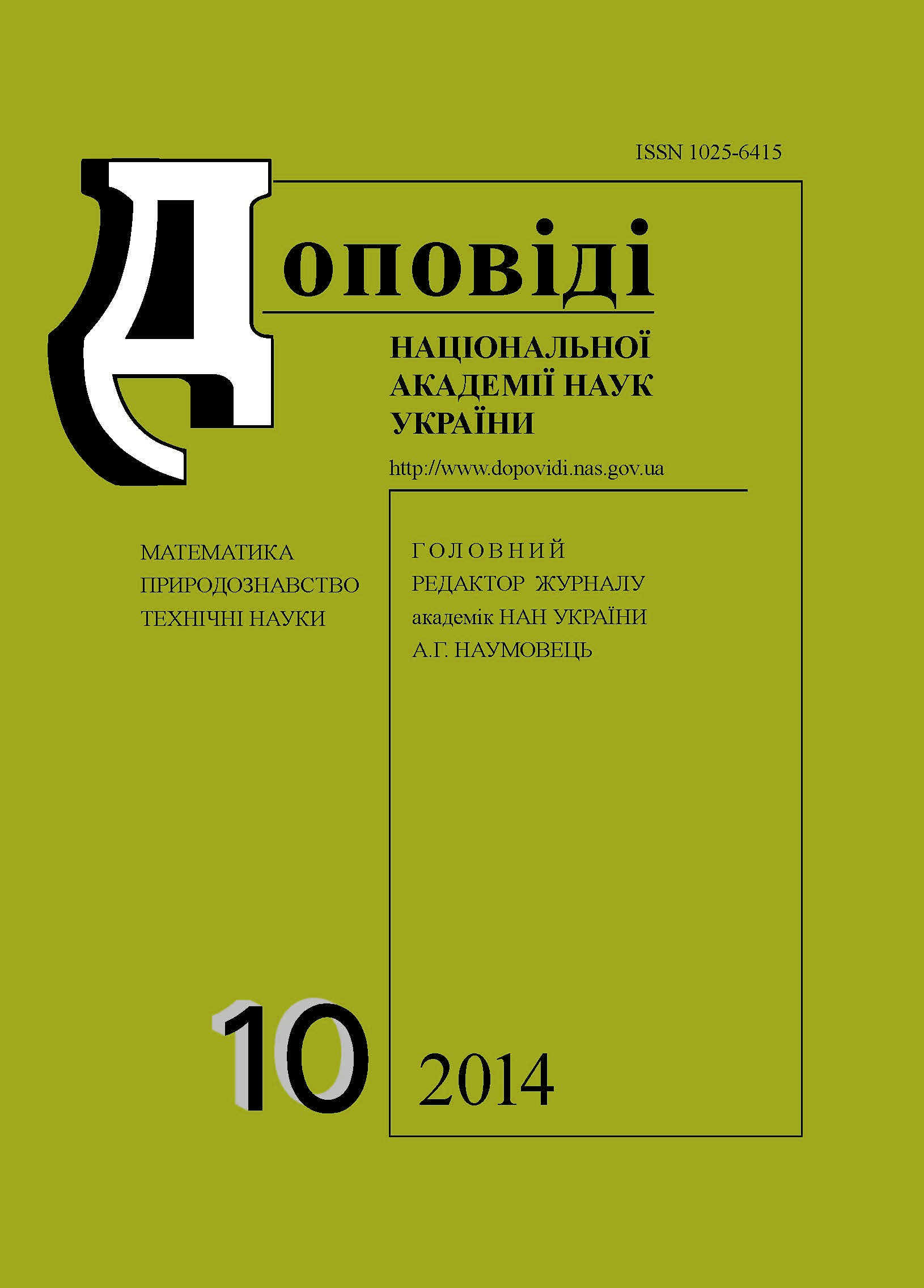Pseudomonas sp. strain 2303 as active phytopathogenic antagonist and its antibiotic characteristics
DOI:
https://doi.org/10.15407/dopovidi2014.10.161Keywords:
antagonist, antibiotic characteristics, phytopathogens, Pseudomonas sp. strain 2303Abstract
As a result of the screening among strains in the Ukrainian collection of microorganisms, Pseudomonas sp. strain 2303 with high antibacterial and antifungal activities was selected. The growth inhibition zone against phytopathogenic bacteria Pseudomonas syringae, Pectobacterium carotovorum, Xanthomonas campestris, Clavibacter michiganensis, and Agrobacterium tumefaciens was 18–39 mm; the inhibition index against micromycetes belonging to Fusarium, Bipolaris, Pythium, and Gaeumannomyces genera ranged from 39 to 51%. Pseudomonas sp. strain 2303 was also characterized by a high algicidal activity: cell-free liquid culture (1 : 5 dilution) repressed the growth of cyanobacteria Anabaena variabilis, Nostoc linckia, and Microcystis aeruginosa by 85–90%. HPLC-analysis of Pseudomonas sp. 2303 liquid culture revealed the antibiotic active substance — phenazine-1-carboxilic acid. Results of molecular-genetic analysis — amplification with primers to phzD gene — suggest that Pseudomonas sp. 2303 genome contains phenazine operon. Pseudomonas sp. 2303 can be considered as a perspective strain for the development of algicidal preparations and biopreparations to protect crops in agriculture.
Downloads
References
Pseudomonas: Model Organism, Pathogen, Cell Factory (Ed. B. H. A. Rehm), Weinheim: Wiley-VCH, 2008.
Smirnov V. V., Kiprianova E. A. Bacteria of the genus Pseudomonas, Kyiv: Nauk. dumka, 1990 (in Ukrainian).
Andreyuk E. I., Kopteva Zh. P., Zanina V. V. The cyanobacteria, Kiev: Nauk. dumka, 1990 (in Russian).
Vasser S. P., Kondrateva N. V., Masyuk N. P. Seaweed. Directory, Kiev: Nauk. dumka, 1989 (in Russian).
Bakaev A. V., Bakaeva E. N., Ignatova N. A. Inzh. vestn. Dona, 2012, No 4, Pt. 2: P. 23–28 (in Russian).
Klochko V. V., Zelena L. B., Chugunova K. O., Avdeeva L. V. Dosiagnennia i problem genetyky, selektsii ta biotekhnologii, 2012, 4: 358–362 (in Ukrainian).
Ownley B. H., Weller D. M., Thomashow L. S. Phytopathology, 1992, 82, No 2: 178–184. https://doi.org/10.1094/Phyto-82-178
Zender A., Gorham P. R. Can. J. Microbiol., 1960, 6: 645–660. https://doi.org/10.1139/m60-077
Pat. 2382075 C1 RU, IPC C12N1/20, C12R1/07, A01N63/00. A strain of bacteria Brevibacillus laterosporus, suppressing and preventing the development of planktonic and biofilm forms of microscopic algae in water systems, Azizberkyan R. R., Kuznetsova N. I., Grigoreva T. M., Publ. 20.02.2010 (in Russian).
Kiprianova E. A., Shepelevich V. V., Klochko V. V., Ostapchuk A. N., Varbanets L. D., Skoklyuk L. B., Berezkina A. E., Avdeeva L. V. Mikrobiol. zhurn., 2013, 75, No 6: 28–35 (in Russian).
Feklistova I. N., Maksimova N. P. Vestn. Belorus. un-ta. Ser. 2, 2005, No 2: 66–69 (in Russian).
Downloads
Published
How to Cite
Issue
Section
License
Copyright (c) 2025 Reports of the National Academy of Sciences of Ukraine

This work is licensed under a Creative Commons Attribution-NonCommercial 4.0 International License.



